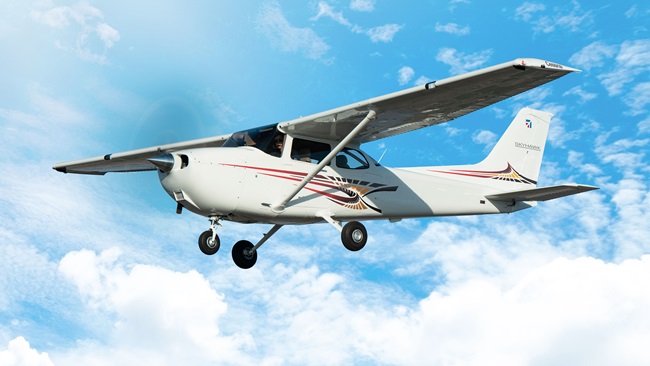Oregon expecting big crowds for solar eclipse
According to astronomers and local pilots, aviators seeking an advantageous vantage point for the Aug. 21 total solar eclipse should begin planning for it now. Due to prevailing weather patterns, Madras, Oregon, has emerged as one of the most favorable locations in the West to view the spectacle as it sweeps across the United States to South Carolina.
Scores of local, regional, and international travelers are expected to descend on a handful of locations predicted to have favorable conditions, comfortable amenities, or both.
Matt Penn, an associate astronomer at the National Solar Observatory in Tuscon, Arizona, has studied eclipses for most of his professional life and is headed to Idaho with a team of high school students studying the total solar eclipse for their science, technology, engineering, and math classes. Penn said the rare glimpse of the sun’s corona as it peeks out from behind the shadow of the moon “is one of the most beautiful things we can see in the sky.” Penn organized a coast-to-coast grass-roots eclipse documentation project called Citizen CATE that will make high-definition photos available to scientists who are studying the phenomenon.
Many small cities along the eclipse’s path are planning for an influx of visitors, and some locations might not be able to accommodate the interest the spectacle is expected to generate. Pilots at several of the nation’s eclipse hot spots said local preparations began months ago for the once-in-a-lifetime event.
The Pacific Northwest will experience the total solar eclipse before anywhere else in the country, and a large contingent of travelers is expected to descend on Madras, east of Lake Simtustus, a desert valley that was once home to a World War II Army Air Base and its Bell P-39s Airacobras and Boeing B-17 Flying Fortresses.
Madras Municipal Airport is directly under the path of totality, and a large crowd of eclipse enthusiasts is expected to visit during the Oregon SolarFest, hosted by the city of Madras in partnership with NASA and the Total Eclipse 2017 group. The general aviation airport also is home to the Erickson Aircraft Collection, an eclectic group of warbirds that includes a P-38 Lightning, SBD Dauntless, PBY 5A Catalina, and many other unique aircraft.
“The problem is simply how to get there,” cautioned John Alexander, a Eugene, Oregon, pilot with experience navigating his Cessna 140 above the state’s arid eastern region.
The Jefferson County Fairgrounds will serve as the nucleus for Oregon SolarFest, a rare confluence of the eclipse, music, science, food, and drink in the shadows of snow-covered Mount Jefferson on the western horizon from Aug. 17 through 22. A predicted cloudless sky coupled with the festival are expected to swell the 6,662 population to 30,000, according to the Madras-Jefferson County Chamber of Commerce.
Musical entertainment includes tribute bands paying homage to rockers Aerosmith, Creedence Clearwater Revival, Foreigner, Heart, and Tom Petty; and country crooners saluting Reba McEntire and George Strait. SolarFest entertainment tickets begin at $15 for children and $20 for adults while festival camping prices begin at $150 and climb to $3,500 for a lockable “container apartment” with a big-screen TV and a private bathroom.
Pilots watching their expenses may prefer to stay in tents near their aircraft and venture onto the festival grounds via local shuttles instead. In anticipation of this interest, the airfield has been making “large scale plans to accommodate planes and pilots,” said Alexander. Procedures are in place to park up to 500 aircraft with camping allowed on the grass.
"We've had people calling in for reservations for over a year now," airport assistant manager Tracy Berg told KTVZ in April.
Food, drinks, facilities, and entertainment will be available for the aviation community, said Alexander. He advised pilots to make reservations as soon as they can because about half of the aircraft parking spots are already assigned and day-tripping would be “strongly discouraged.” Measures are in place for a temporary air traffic control tower with an associated Class D notam, Alexander added.
Alexander said local officials are expecting visitors “from Australia, Thailand, Japan, and all over the place” because of the high likelihood of clear weather during the 10:19 a.m. to 10:21 a.m. total solar eclipse window when the sun would be fully obscured.
He advised visitors to the Madras area to double-check accommodations, pack appropriately for the desert climate, and maintain awareness for intense thermals that can cause chaos for a light aircraft.
To avoid unwanted surprises, Alexander suggested transient pilots first speak to local aviators for insight on weather, terrain, and flight condition peculiarities. He published a web page with flying tips, camping, and eclipse-watching suggestions to assist curious pilots.
“In the Central Oregon valley, you can pretty much count on the sky conditions to be good in August. It’s the best viewing in the entire country because there are no clouds, and it’s a desert,” unlike the verdant Midwest and the Southeast, which are plagued with summer humidity, heat, and the resultant pop-up thunderstorms that might obstruct a view of the solar eclipse.
“Madras is the best bet at this point for pilots as long as they hop to it and reserve a spot,” suggested Alexander, who regretted that he would likely experience the event from the relative comfort of his recreational vehicle instead.
“The Cessna just isn’t big enough for the tent, the sleeping bag, water, food, and all of the supplies you would need” in case the aircraft parking spots were already occupied. “But if I could handle tent camping, then Madras is where I’d head.”




